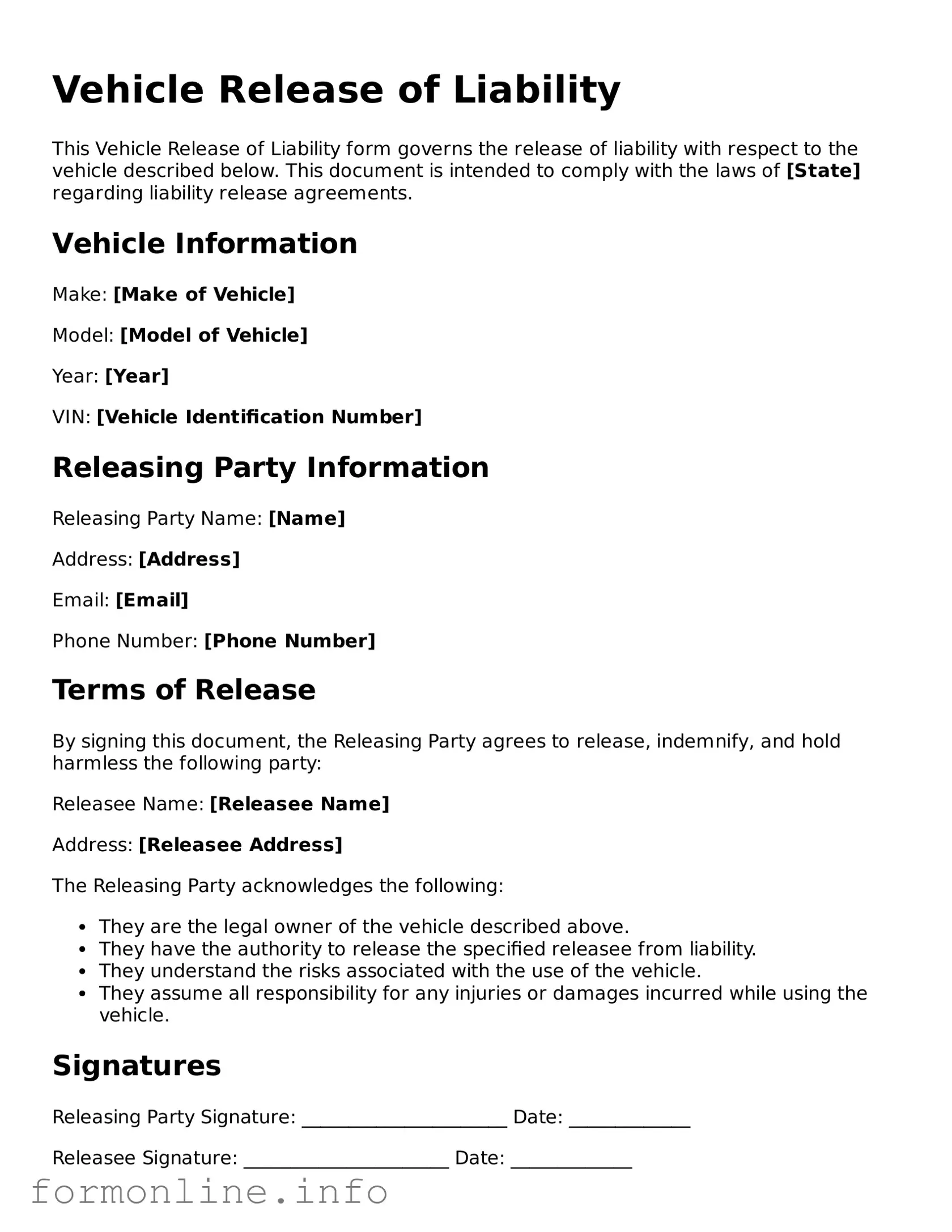Vehicle Release of Liability
This Vehicle Release of Liability form governs the release of liability with respect to the vehicle described below. This document is intended to comply with the laws of [State] regarding liability release agreements.
Vehicle Information
Make: [Make of Vehicle]
Model: [Model of Vehicle]
Year: [Year]
VIN: [Vehicle Identification Number]
Releasing Party Information
Releasing Party Name: [Name]
Address: [Address]
Email: [Email]
Phone Number: [Phone Number]
Terms of Release
By signing this document, the Releasing Party agrees to release, indemnify, and hold harmless the following party:
Releasee Name: [Releasee Name]
Address: [Releasee Address]
The Releasing Party acknowledges the following:
- They are the legal owner of the vehicle described above.
- They have the authority to release the specified releasee from liability.
- They understand the risks associated with the use of the vehicle.
- They assume all responsibility for any injuries or damages incurred while using the vehicle.
Signatures
Releasing Party Signature: ______________________ Date: _____________
Releasee Signature: ______________________ Date: _____________
Witness Information (if applicable)
Witness Name: [Witness Name]
Witness Signature: ______________________ Date: _____________
This document represents the entire understanding between the parties and supersedes any prior agreements regarding release of liability for the vehicle mentioned above.
